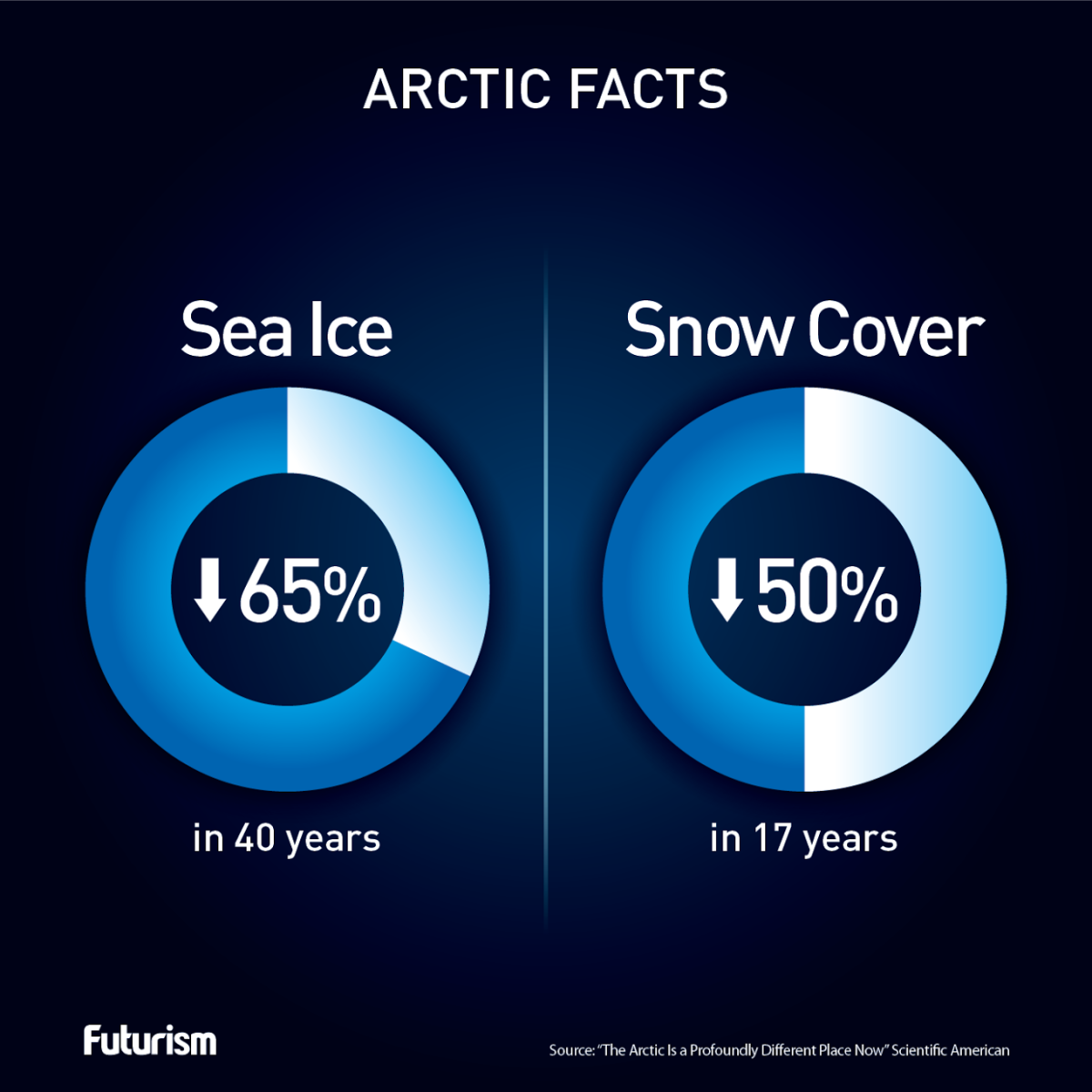
Melting Away
As the Arctic loses ice and breaks high temperature records, it experiences a profound shift into a new state of “normal.” This is as clear a sign as any that climate change’s worst effects are already here. Taken in context with the jarring changes scientists have already tracked — including alarming accidental findings such as green ice caused by microorganism growth in waters at unprecedented high temperatures — the findings from the northernmost regions of our planet all spell out the urgency of the climate change fight in no uncertain terms.
River ice now melts one month earlier than it did only 15 years ago, and in at least one instance a melting glacier cut off its water source, causing an entire river to disappear over the course of four days. Thinning sea ice, glaciers riddled with holes, unusual cycles of seasonal ice, and disruptions to the Arctic food chain are all apparent.

Like the rest of the planet, the Arctic’s warmest temperatures in recorded history occurred between 2011 to 2015. However, unlike the rest of the planet, temperatures are rising twice as fast in the Arctic. Over the past four decades, sea ice has declined by 65 percent. In fact, whereas most sea ice used to remain frozen, now, for the first time, most Arctic sea ice is new.
Aggressive Action Now
These changes have worldwide consequences. A new survey shows that, without action to curb CO2 emissions, sea levels may rise an additional foot. According to a report from the Arctic Monitoring and Assessment Programme, scientists are now measuring changes in the Arctic that are significant enough to have global repercussions from flooding in coastal cities and extreme record temperatures to intensifying monsoons.
Even so, Environment and Climate Change Canada cryosphere scientist Ross Brown insists there is hope. The report also shows that aggressive intervention can slow the warming of the Arctic that climate change is causing. If strong enough steps to reduce emissions were taken, parts of the Arctic, including sea ice cover, could recover.
“There is a choice there to be made, and if we can actually follow through, there is a chance we’ll be able to stabilize the changes that are happening,” he said to E&E News. “I don’t know if it’s optimism, but I think it shows that if we do take action, there is a real concrete result to it.”